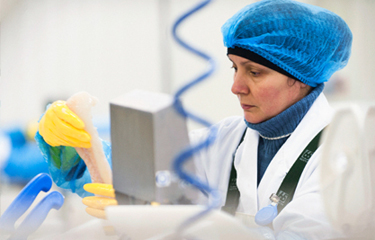Reykjavik, Iceland-headquartered Iceland Seafood International hf (ISI) has reduced its profit before tax (PBT) outlook for 2022, saying in its Q1 results the soaring costs of raw materials and other input factors had a “significant impact” on its profitability in the opening quarter of 2022.
In the quarter, ISI saw its total sales climb 11 percent by value year-on-year to EUR 115.9 million (USD 122.6 million). The group broke even in the quarter, compared to a normalized PBT of EUR 3.7 million (USD 3.9 million) in Q1 2021. It suffered a net loss of EUR 700,000 (USD 740,000), versus a profit of EUR 2.7 million (USD 2.9 million) a year previously
“Despite COVID-19 coming to an end in our key markets and herd immunity being reached in many of our key areas in Europe, this quarter has been extremely challenging,” ISI CEO Bjarni Ármannsson said. “Again and again, we have been increasing the sales price of our products, only to be met with increased prices of input factors. Price of raw material has reached unprecedented heights.”
ISI said significant and rapid price increases in all areas, driven by strong demand and unstable supply, impacted its Q1 results. It said this was a timing issue, as all industry participants are experiencing similar cost increases, but said it is taking time to pass the cost on to customers, especially when dealing with retail customers. While prices have been increased to customers to balance the input prices, the pace of price increases on the cost side has been unprecedented and have started to influence demand of seafood products, ISI said. But there are signs that indicate prices are leveling off in certain areas, it added.
“Our strategy of increasing our exposure to the retail industry in COVID times means this has a greater effect on us than before. Clearly, we’ll reach a balance, and we see no need in changing our overall strategy. This will mean that customers will value more a company with integrated model and strong links to the resource like we have. Similarly, a value-added production close to our customers and end-consumers becomes more valuable. This means that relying on long-distance sourcing and production becomes less attractive in comparison to security of supply, quality, and proximity to our customers. It also means that we’ll have to continue to invest faster and further in automation, increase our own energy production and pay more attention and devote more resources to sustainability matters,” Ármannsson said.
According to the Q1 2022 results statement, ISI’s Value-Added Southern Europe division saw strong demand in the period, with sales of EUR 54.1 million (USD 57.2 million), representing an increase of EUR 16.9 million (USD 17.9 million) on Q1 2021, with solid sales of Icelandic cod and Argentinean shrimp. Overall, the normalized PBT of the division of EUR 2.6 million (USD 2.7 million) in Q1 was down EUR 500,000 (USD 528,751) on Q1 2021.
Its Value-Added Northern Europe division’s Q1 2022 sales fell 10 percent year-on-year to EUR 28.6 million (USD 30.2 million), and its normalized PBT was EUR -2.9 million (USD -3.1 million).
ISI said its Sales and Distribution (S&D) division benefited from strong demand and high prices of Icelandic products in the quarter, and its normalized PBT increased 50 percent to EUR 900,000 (USD 951,557).
ISI comprises 11 businesses in seven countries and services more than 5,000 customers across 45 countries. It has seven value-added factories and employs 945 people. In 2021, it sold 100,000 metric tons (MT) of products.
Photo courtesy of ISI







